Abstract
The changes in cardiac output and mean right atrial pressure (R.A.P.) evoked at different circulating blood volumes by stimulation of the splanchnic sympathetic nerves were investigated in adrenalectomized cats under chloralose anaesthesia, with unopened chests and spontaneous respiration and with active vascular reflexes. The cardiac autonomic nerves were cut or blocked pharmacologically. Stimulation of the distal ends of the splanchnic nerves at 4 Hz caused aortic pressure and R.A.P. to rise to maximum values at 2 min before declining slowly. Cardiac output rose more slowly to a steady state at 3 min; at higher circulating volumes it fell initially. Although the output increments were slower in development they were better sustained than those in total peripheral resistance. The proportionate output increments were largest and the R.A.P. increments least at low circulating volumes whereas at high volumes the R.A.P. increments were large but the output changes were small or negative; the pattern of changes resembled that resulting from infusion of blood. Stimulation of the cardiac sympathetic nerves evoked a rise in output and a fall in R.A.P. related in magnitude to the initial value of R.A.P. On simultaneous stimulation of the splanchnic and cardiac sympathetic nerves the changes in output combined whereas the R.A.P. changes cancelled, to give output increments of 25-50% with little change in R.A.P. at all circulating volumes. At high circulating volumes infusion of blood did not usually alter output or aortic pressure, but splanchnic nerve stimulation increased peripheral resistance and aortic pressure and commonly evoked a rise in left ventricular stroke work which could not be accounted for by known adrenergic mechanisms or by elevation of left ventricular end-diastolic pressure. Portal venous pressure was consistently elevated by splanchnic nerve stimulation; it rose more slowly than did aortic pressure or R.A.P. and was independent of a changing central venous pressure provided this did not exceed +5 mmHg. The cardiac output increments were not related to changes in the ratio between the input and output resistances of the portal vein and it is concluded that displacement blood from the peripheral to the central vasculature was induced by contraction capacitance vessels.
Full text
PDF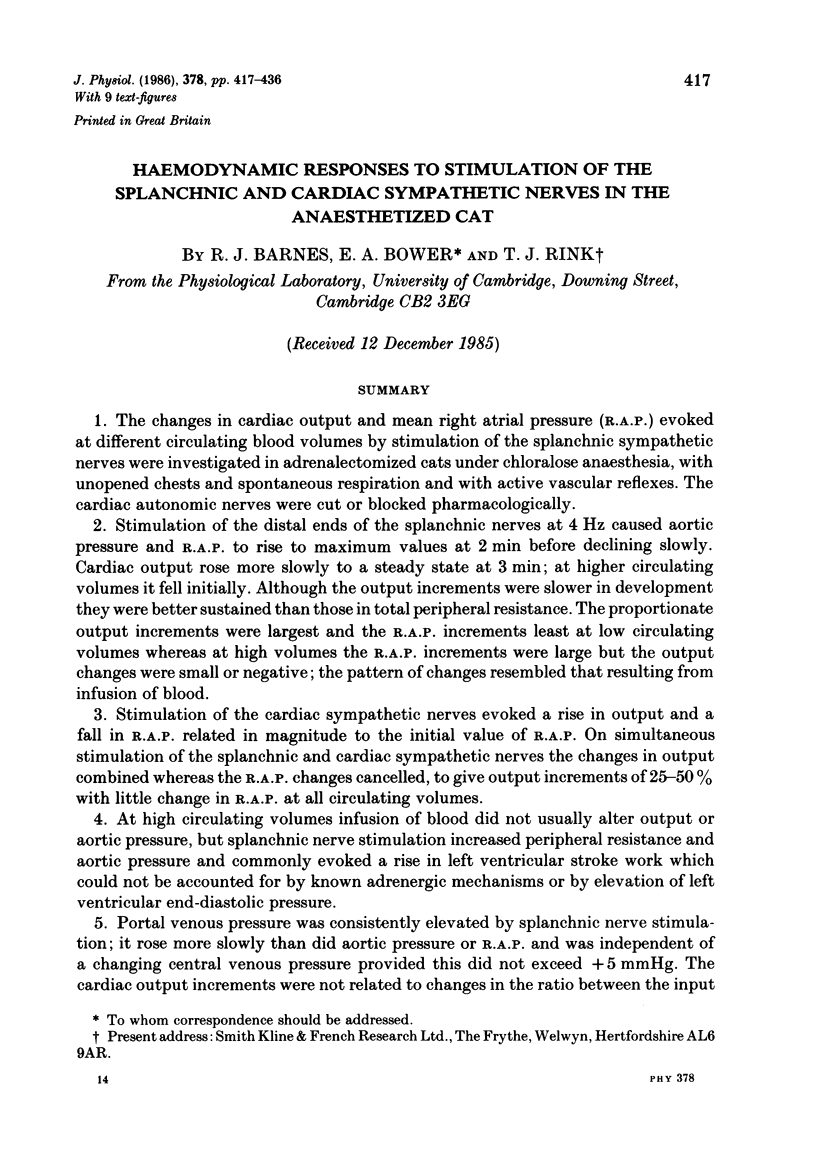
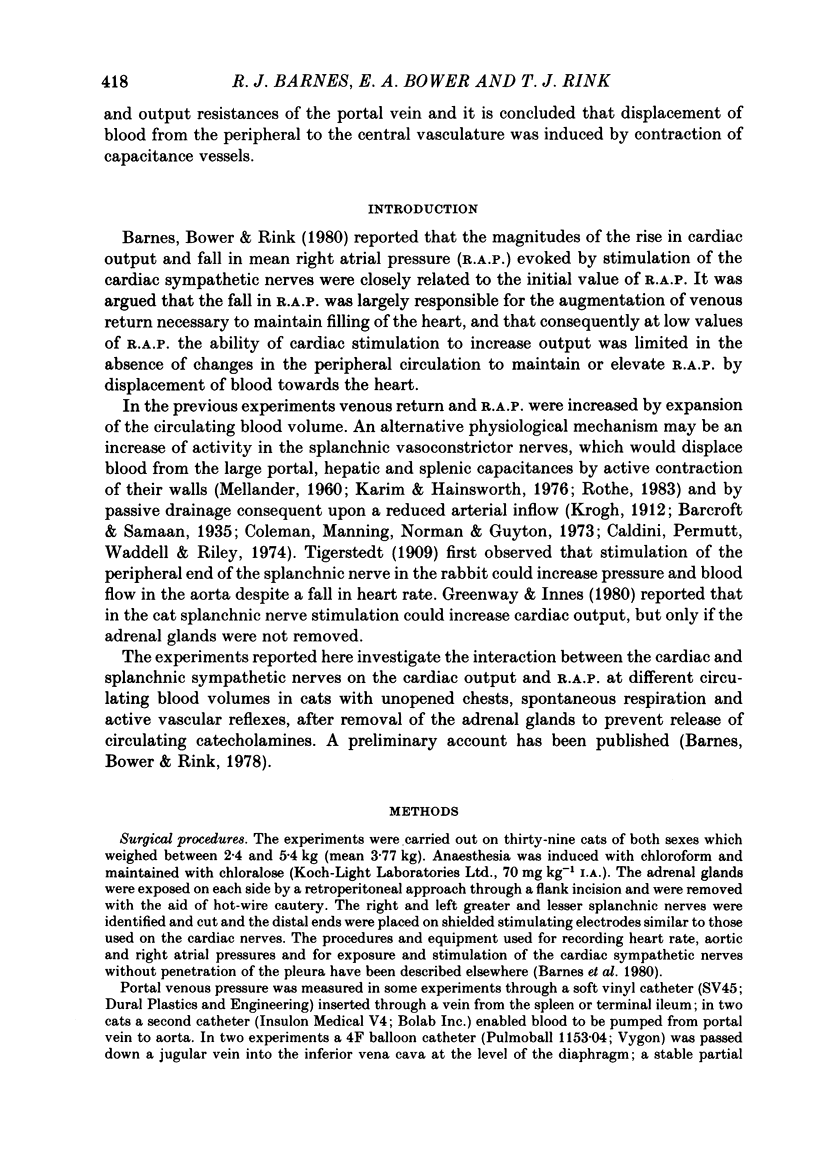
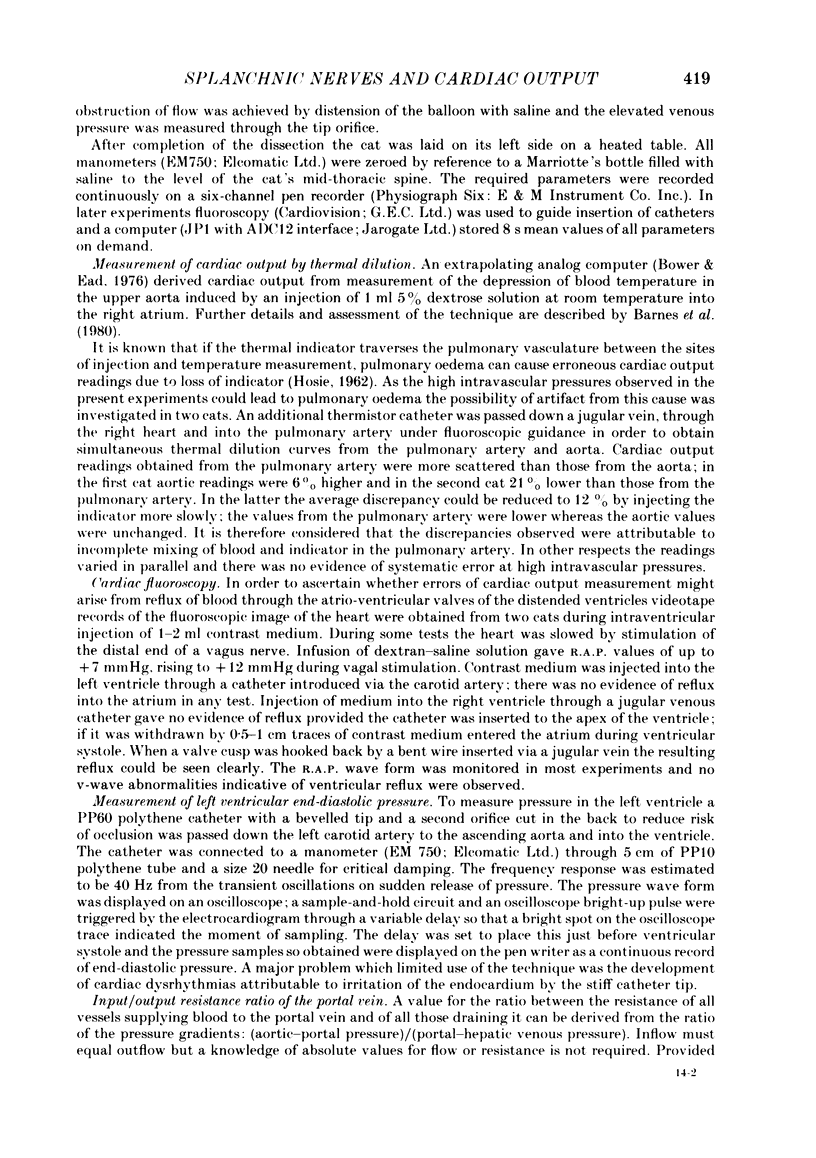
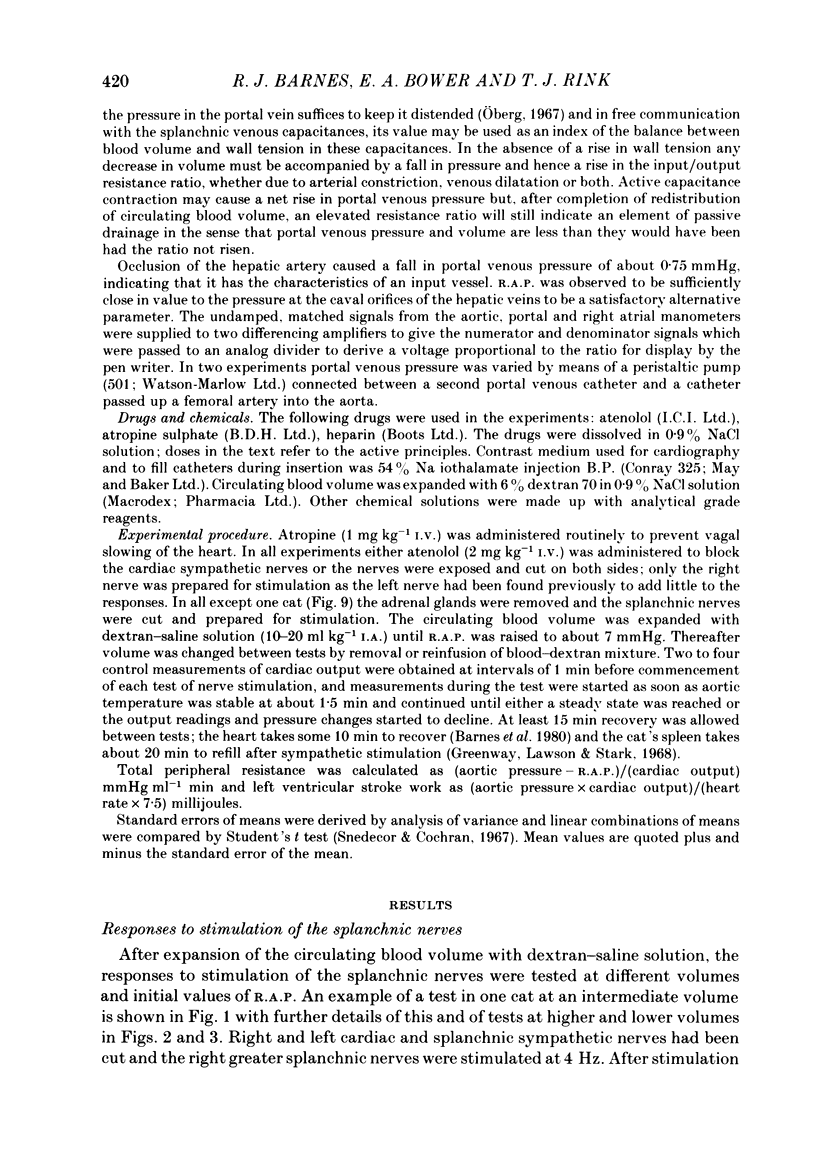
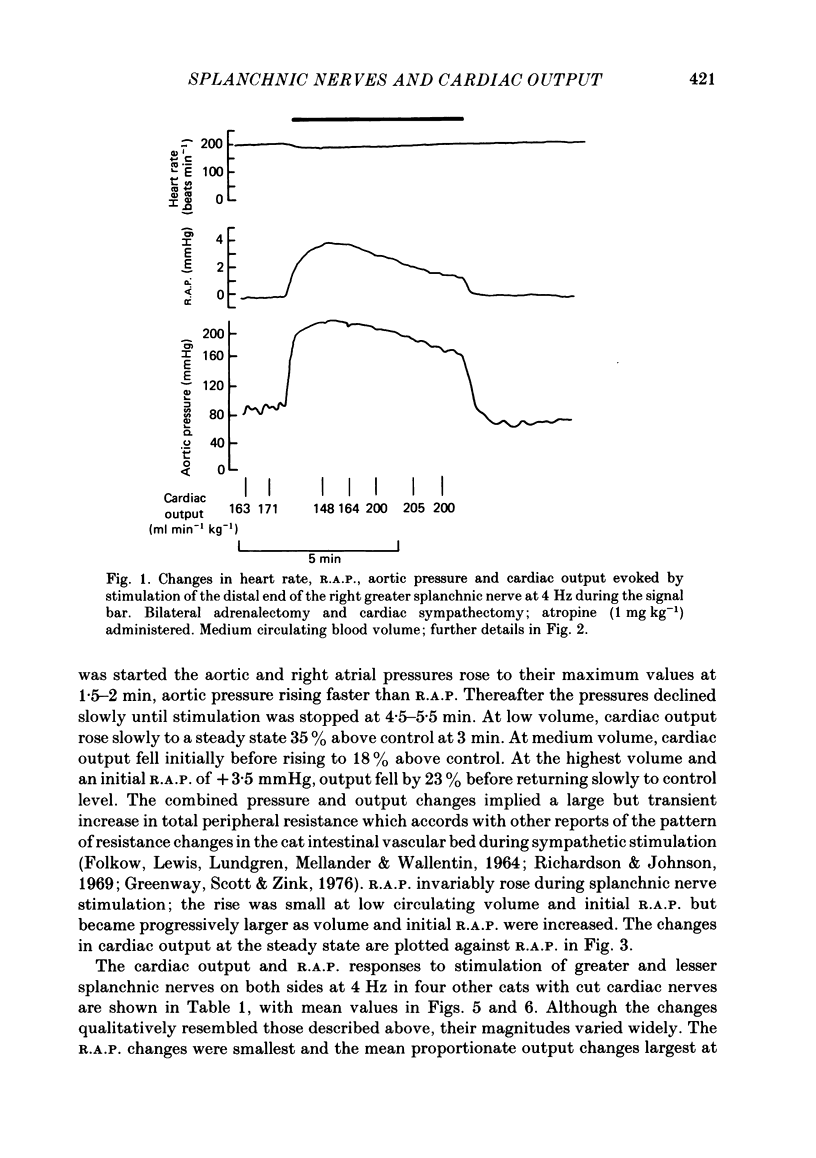
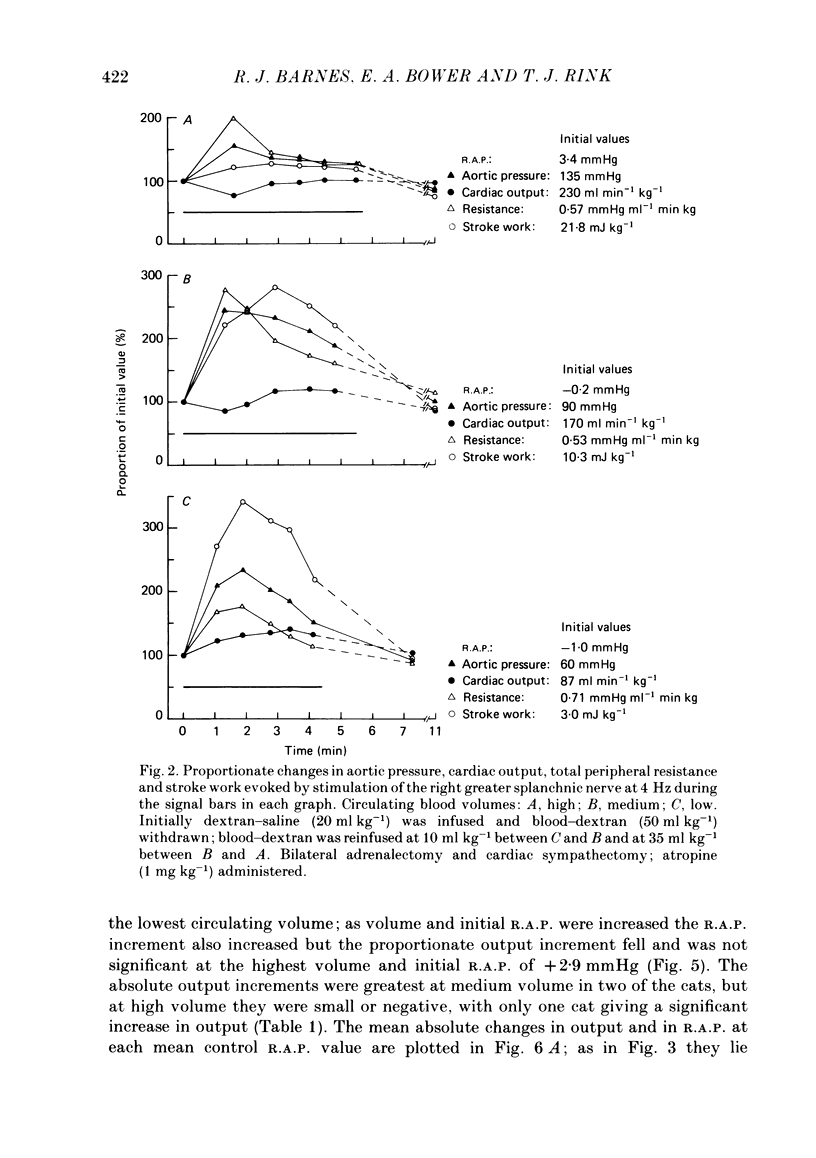
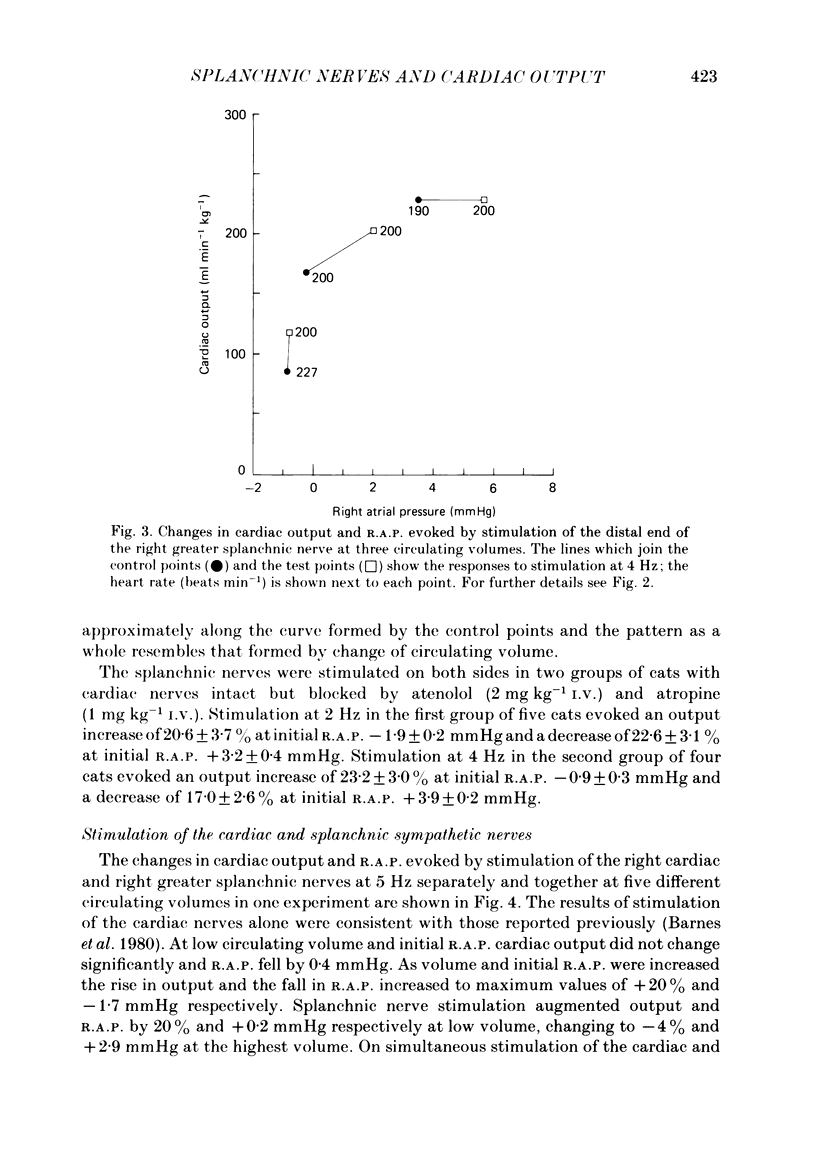
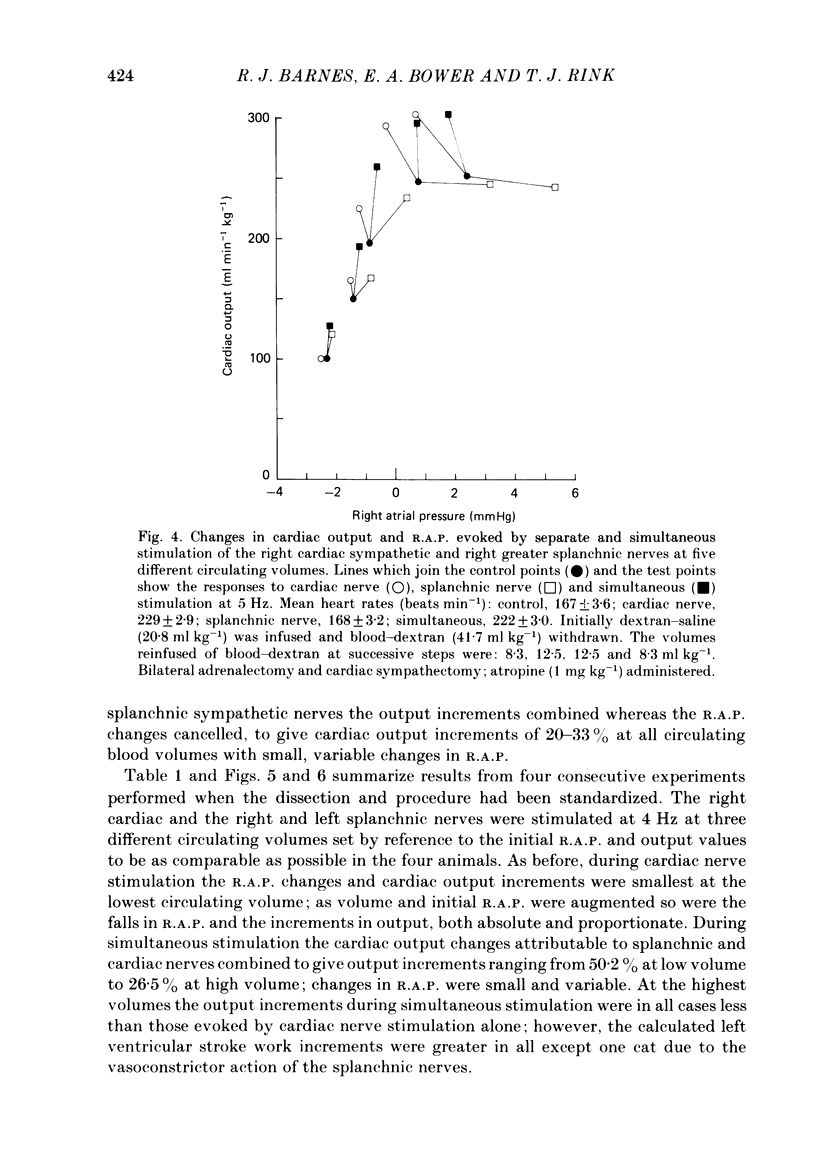
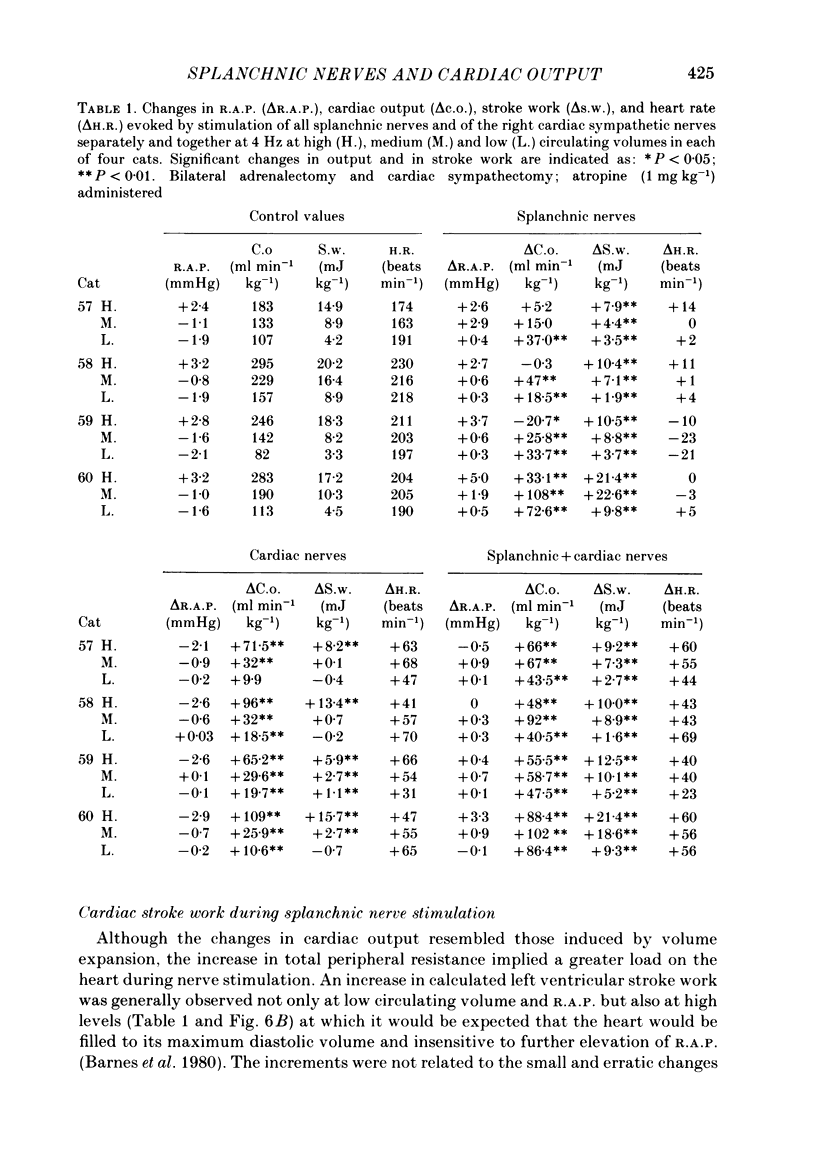
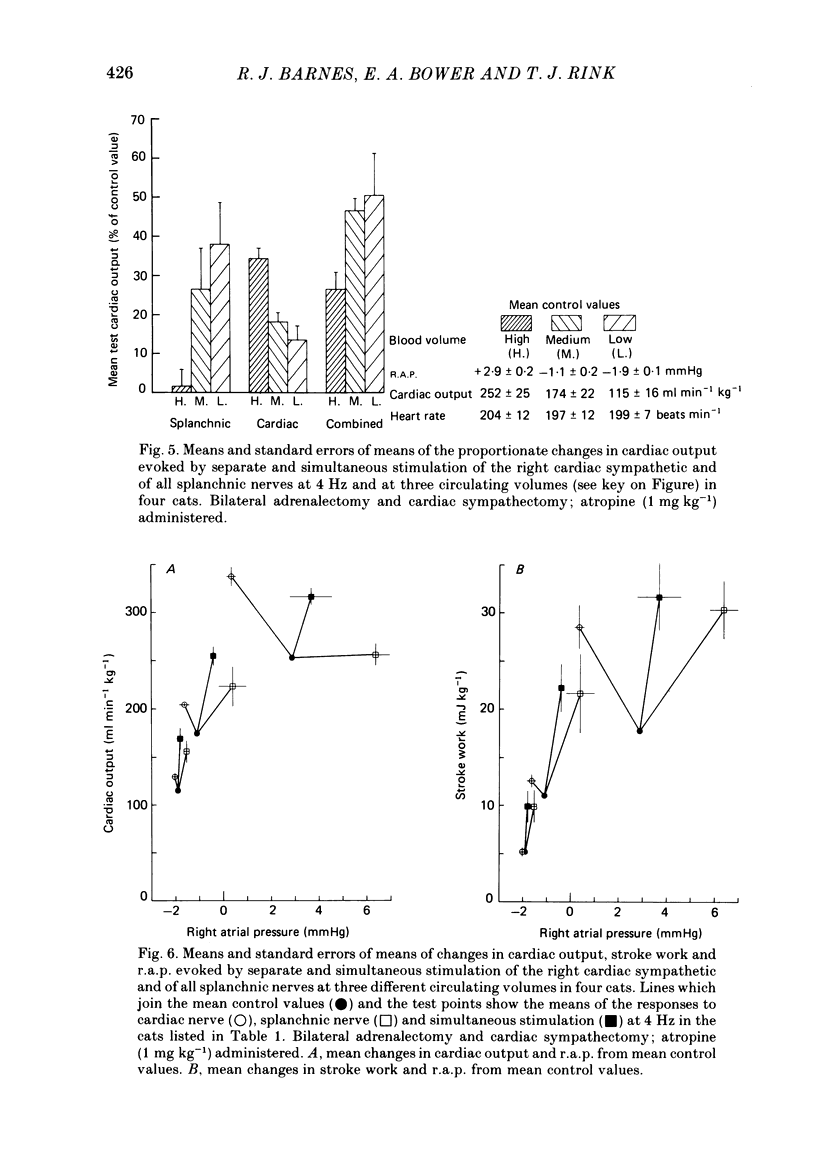
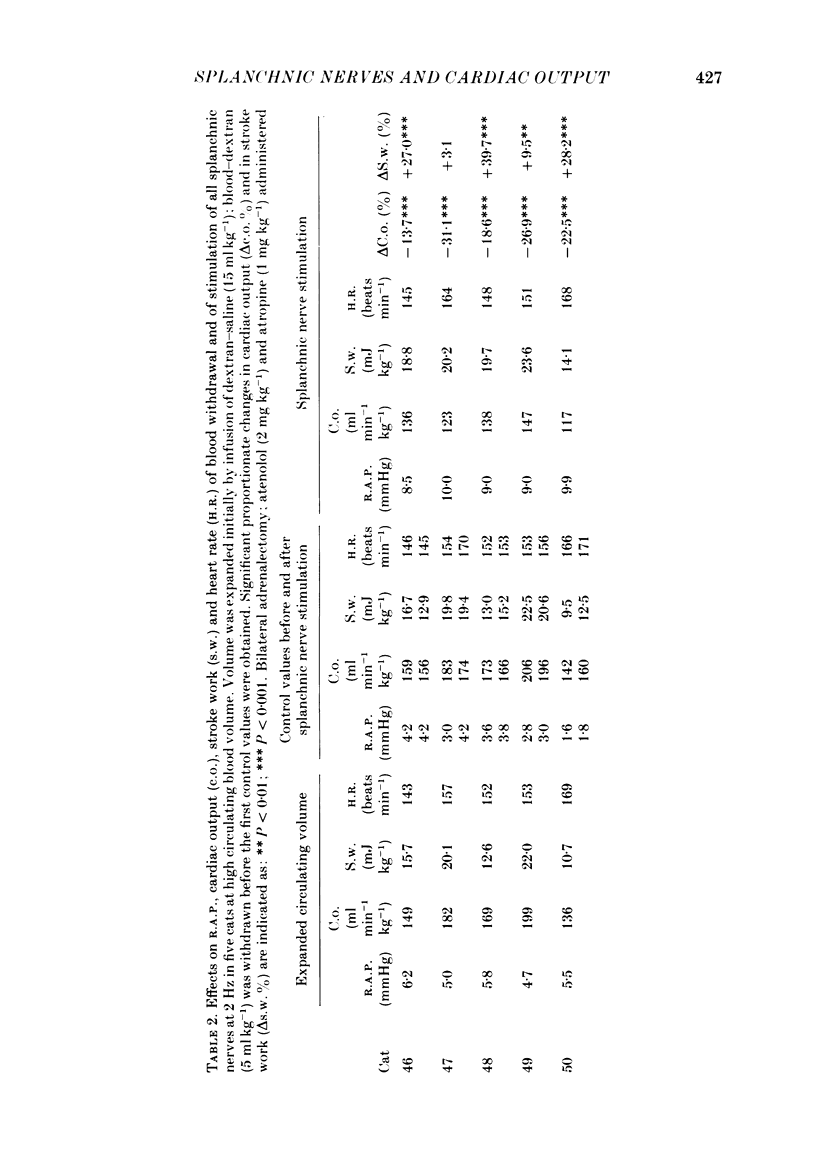
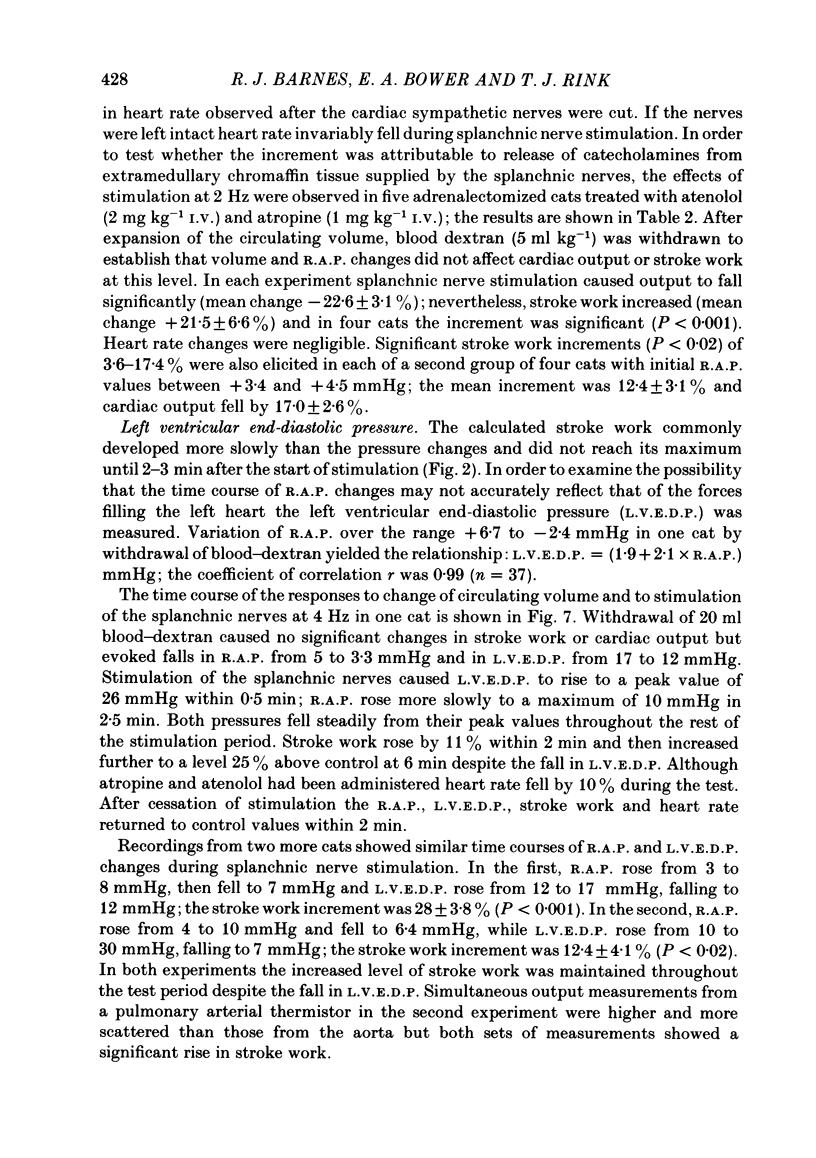
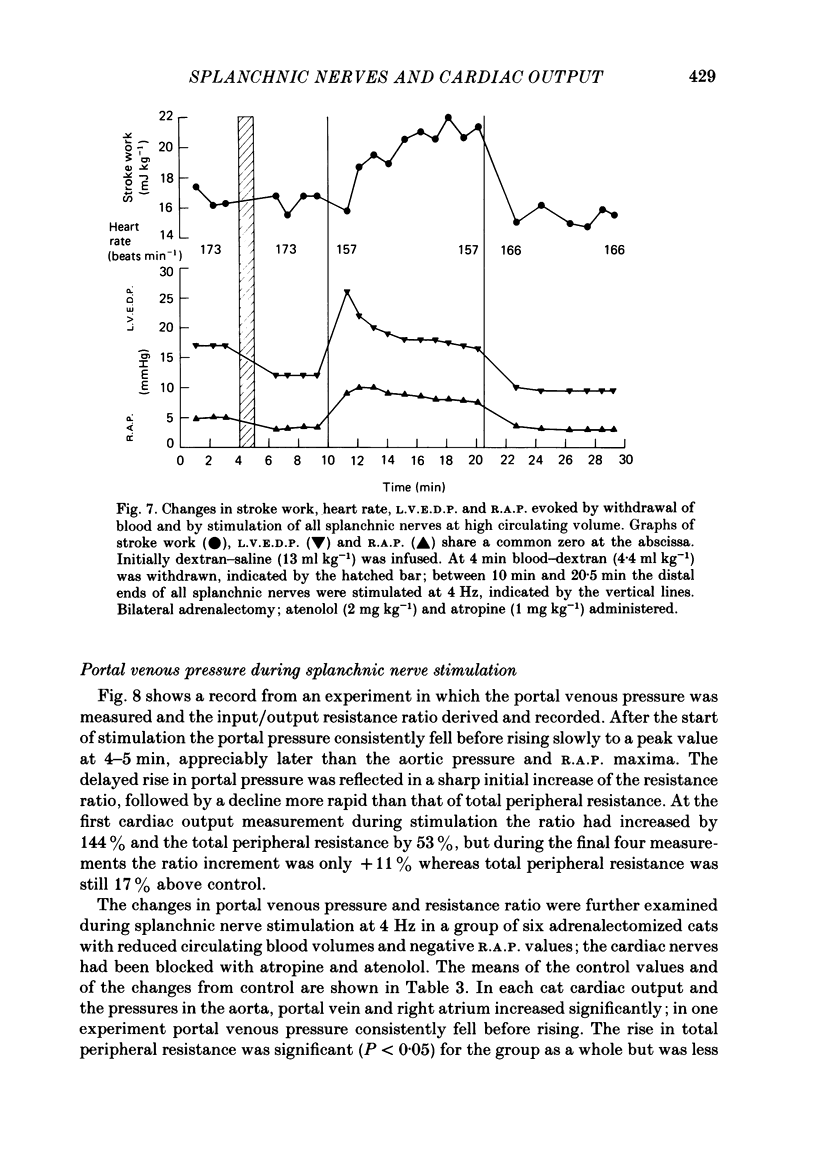
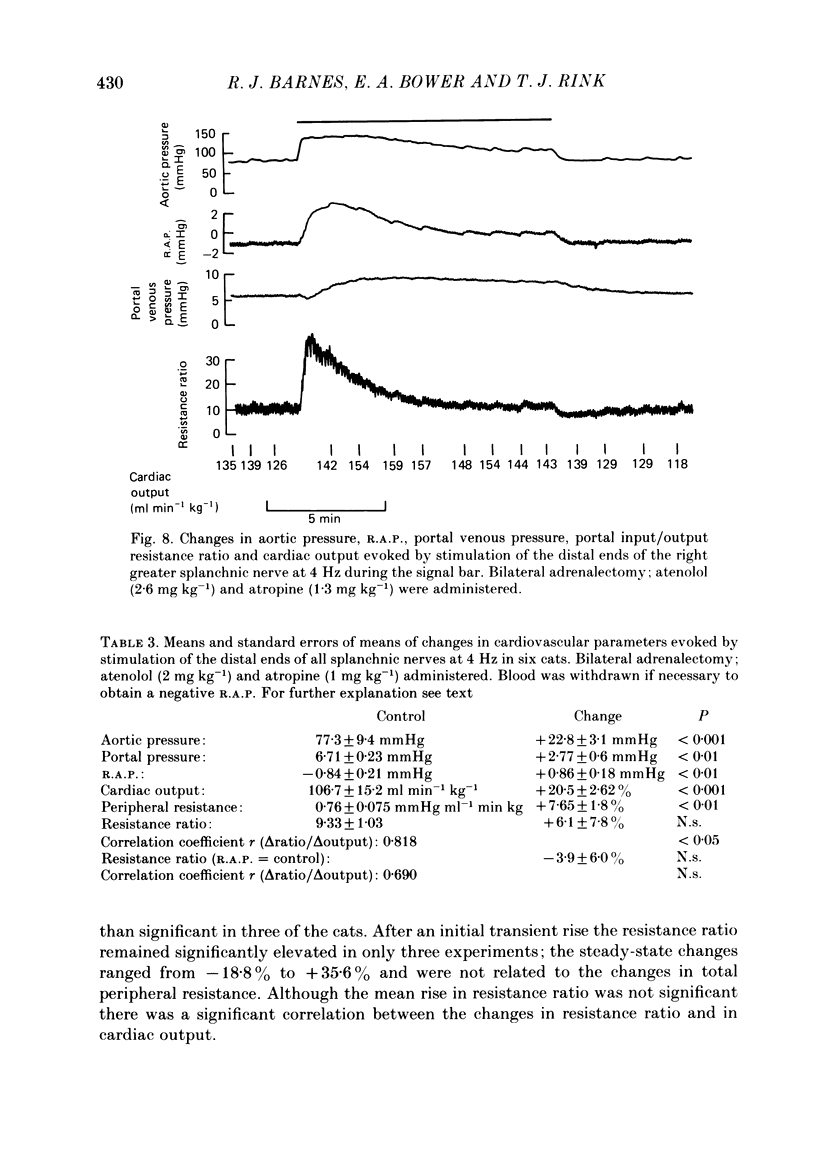
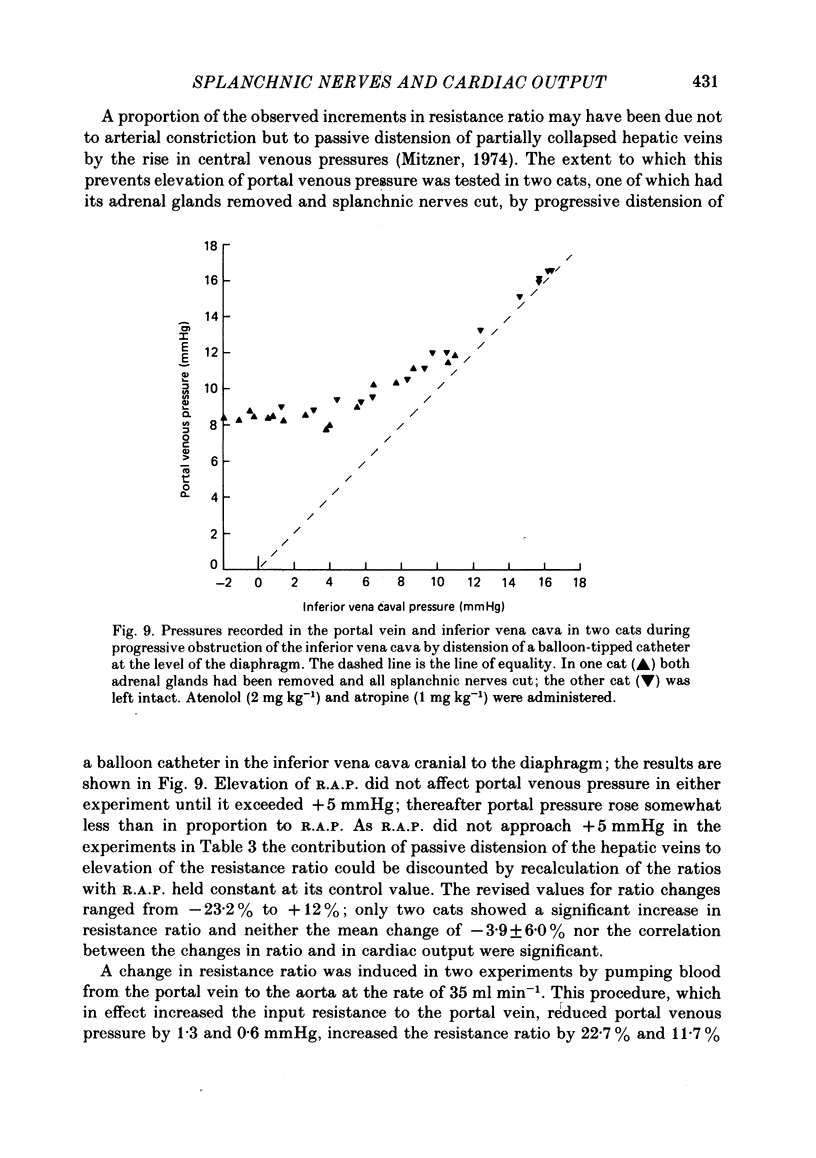
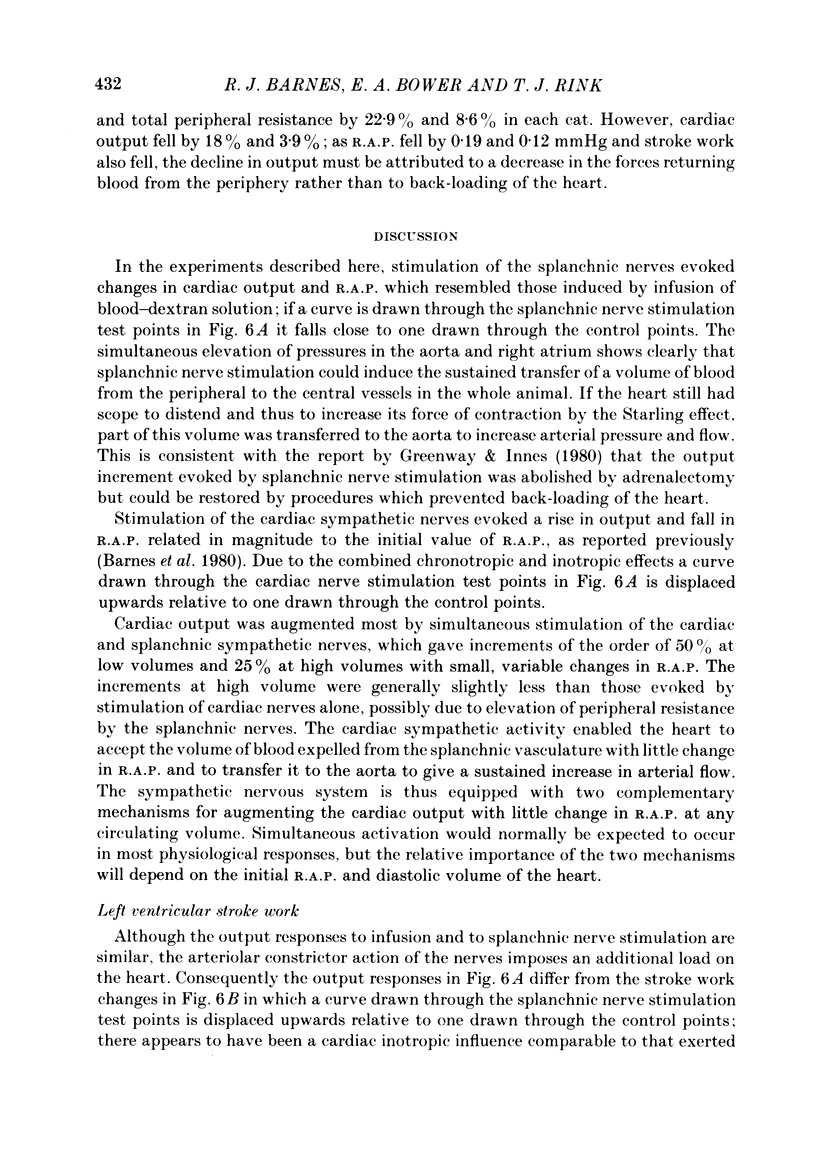
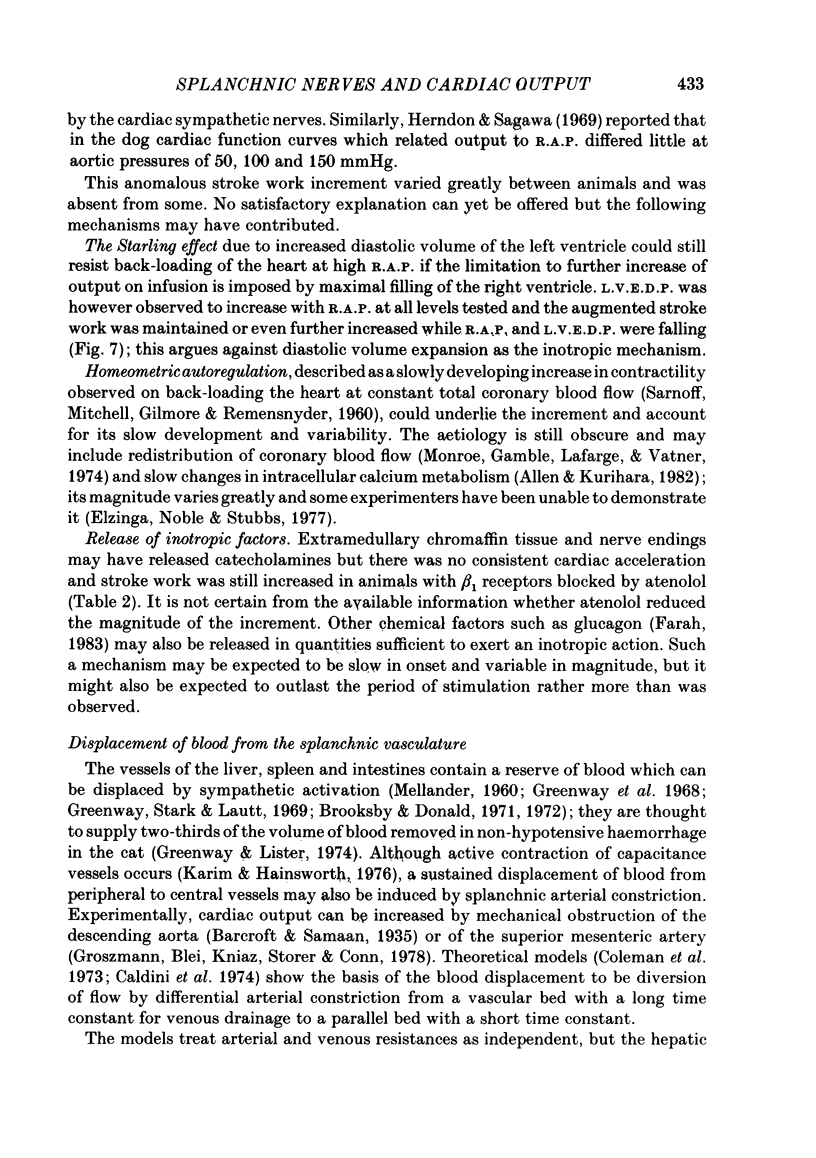
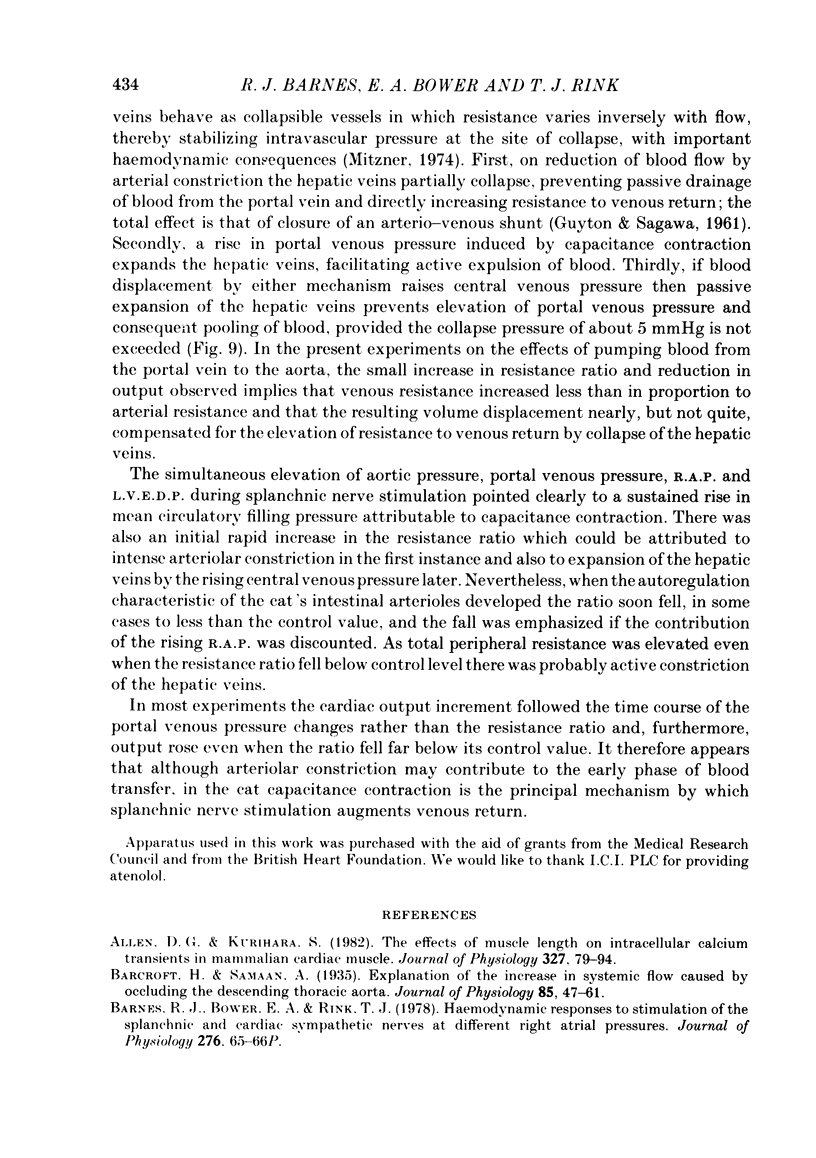
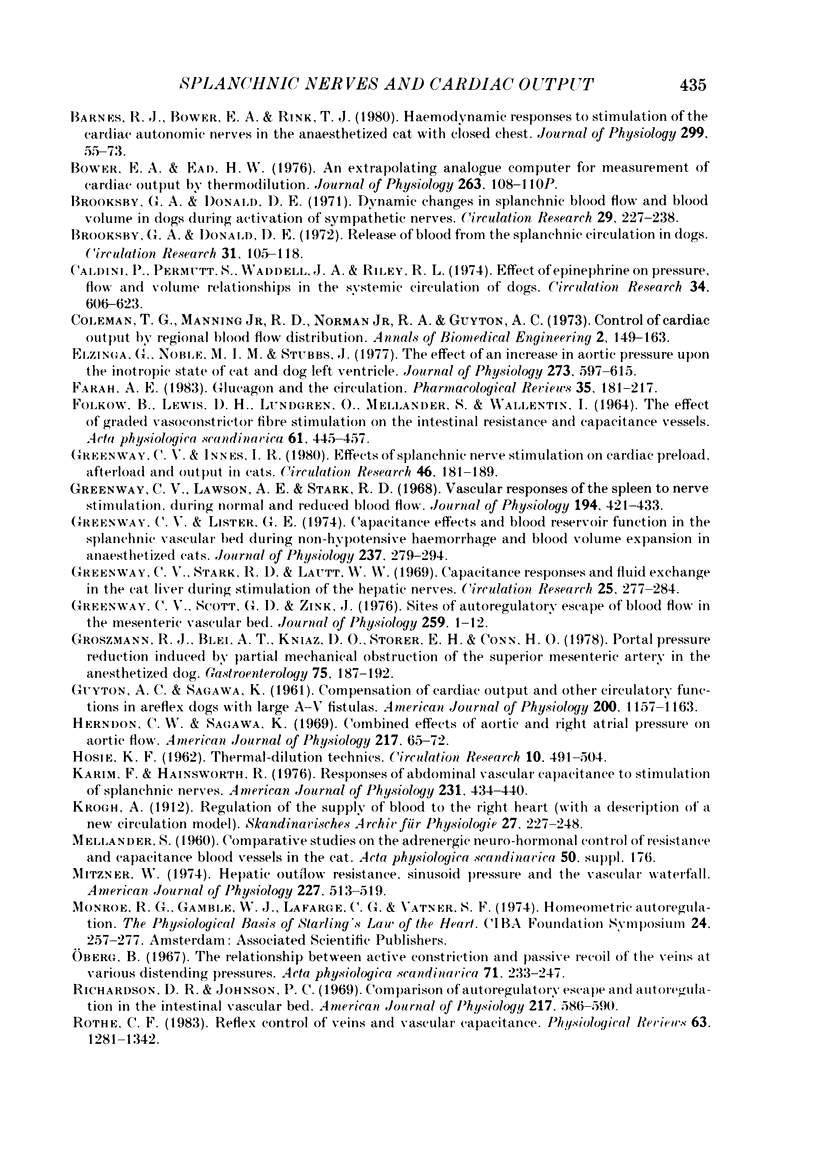
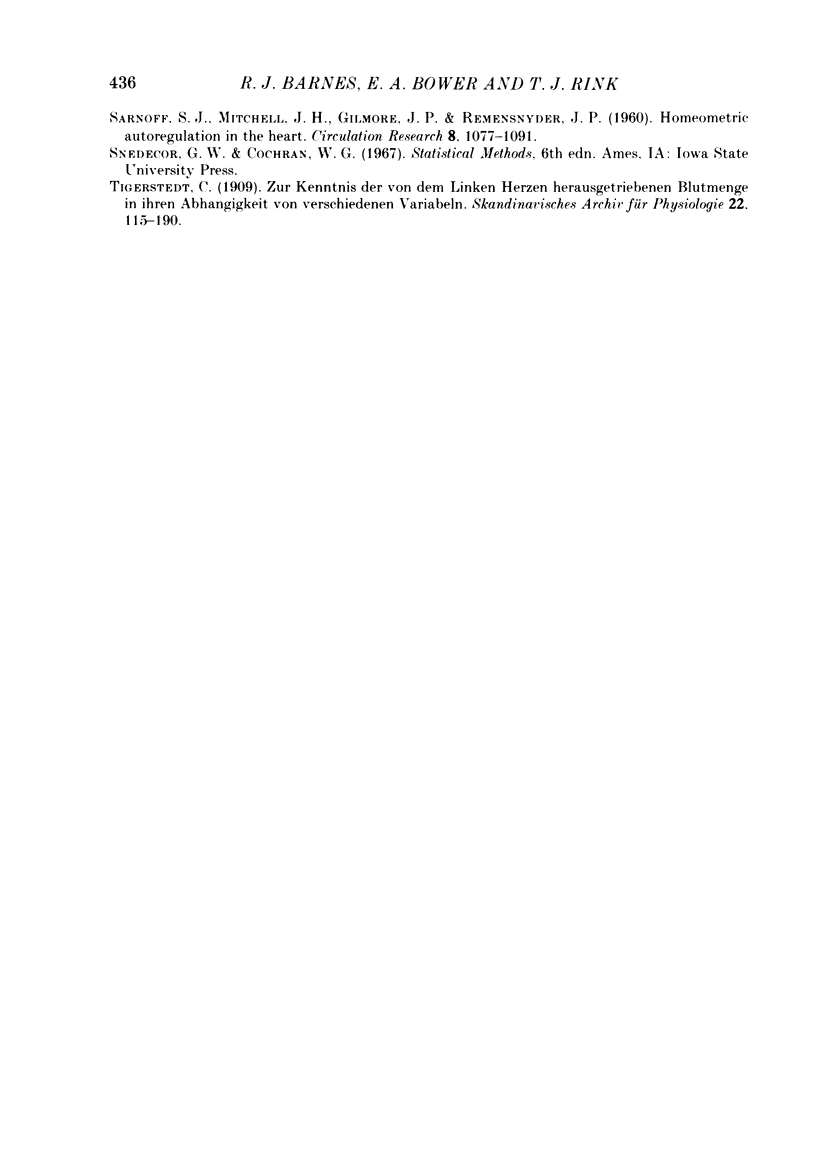
Selected References
These references are in PubMed. This may not be the complete list of references from this article.
- Allen D. G., Kurihara S. The effects of muscle length on intracellular calcium transients in mammalian cardiac muscle. J Physiol. 1982 Jun;327:79–94. doi: 10.1113/jphysiol.1982.sp014221. [DOI] [PMC free article] [PubMed] [Google Scholar]
- Barcroft H., Samaan A. The explanation of the increase in systemic flow caused by occluding the descending thoracic aorta. J Physiol. 1935 Aug 22;85(1):47–61. doi: 10.1113/jphysiol.1935.sp003301. [DOI] [PMC free article] [PubMed] [Google Scholar]
- Barnes R. J., Bower E. A., Rink T. J. Haemodynamic responses to stimulation of the cardiac autonomic nerves in the anaesthetized cat with closed chest. J Physiol. 1980 Feb;299:55–73. doi: 10.1113/jphysiol.1980.sp013110. [DOI] [PMC free article] [PubMed] [Google Scholar]
- Barnes R. J., Bower E. A., Rink T. J. Haemodynamic responses to stimulation of the splanchnic and cardiac sympathetic nerves at different right atrial pressures [proceedings]. J Physiol. 1978 Mar;276:65P–66P. [PubMed] [Google Scholar]
- Brooksby G. A., Donald D. E. Dynamic changes in splanchnic blood flow and blood volume in dogs during activation of sympathetic nerves. Circ Res. 1971 Sep;29(3):227–238. doi: 10.1161/01.res.29.3.227. [DOI] [PubMed] [Google Scholar]
- Brooksby G. A., Donald D. E. Release of blood from the splanchnic circulation in dogs. Circ Res. 1972 Jul;31(1):105–118. doi: 10.1161/01.res.31.1.105. [DOI] [PubMed] [Google Scholar]
- Caldini P., Permutt S., Waddell J. A., Riley R. L. Effect of epinephrine on pressure, flow, and volume relationships in the systemic circulation of dogs. Circ Res. 1974 May;34(5):606–623. doi: 10.1161/01.res.34.5.606. [DOI] [PubMed] [Google Scholar]
- Elzinga G., Noble M. I., Stubbs J. The effect of an increase in aortic pressure upon the inotropic state of cat and dog left ventricles. J Physiol. 1977 Dec;273(3):597–615. doi: 10.1113/jphysiol.1977.sp012112. [DOI] [PMC free article] [PubMed] [Google Scholar]
- FOLKOW B., LEWIS D. H., LUNDGREN O., MELLANDER S., WALLENTIN I. THE EFFECT OF GRADED VASOCONSTRICTOR FIBRE STIMULATION ON THE INTESTINAL RESISTANCE AND CAPACITANCE VESSELS. Acta Physiol Scand. 1964 Aug;61:445–457. [PubMed] [Google Scholar]
- Farah A. E. Glucagon and the circulation. Pharmacol Rev. 1983 Sep;35(3):181–217. [PubMed] [Google Scholar]
- GUYTON A. C., SAGAWA K. Compensations of cardiac output and other circulatory functions in areflex dogs with large A-V fistulas. Am J Physiol. 1961 Jun;200:1157–1163. doi: 10.1152/ajplegacy.1961.200.6.1157. [DOI] [PubMed] [Google Scholar]
- Greenway C. V., Lawson A. E., Stark R. D. Vascular responses of the spleen to nerve stimulation during normal and reduced blood flow. J Physiol. 1968 Feb;194(2):421–433. doi: 10.1113/jphysiol.1968.sp008416. [DOI] [PMC free article] [PubMed] [Google Scholar]
- Greenway C. V., Lister G. E. Capacitance effects and blood reservoir function in the splanchnic vascular bed during non-hypotensive haemorrhage and blood volume expansion in anaesthetized cats. J Physiol. 1974 Mar;237(2):279–294. doi: 10.1113/jphysiol.1974.sp010482. [DOI] [PMC free article] [PubMed] [Google Scholar]
- Greenway C. V., Scott G. D., Zink J. Sites of autoregulatory escape of blood flow in the mesenteric vascular bed. J Physiol. 1976 Jul;259(1):1–12. doi: 10.1113/jphysiol.1976.sp011451. [DOI] [PMC free article] [PubMed] [Google Scholar]
- Greenway C. V., Stark R. D., Lautt W. W. Capacitance responses and fluid exchange in the cat liver during stimulation of the hepatic nerves. Circ Res. 1969 Sep;25(3):277–284. doi: 10.1161/01.res.25.3.277. [DOI] [PubMed] [Google Scholar]
- Groszmann R. J., Blei A. T., Kniaz J. L., Storer E. H., Conn H. O. Portal pressure reduction induced by partial mechanical obstruction of the superior mesenteric artery in the anesthetized dog. Gastroenterology. 1978 Aug;75(2):187–192. [PubMed] [Google Scholar]
- HOSIE K. F. Thermal-dilution technics. Circ Res. 1962 Mar;10:491–504. doi: 10.1161/01.res.10.3.491. [DOI] [PubMed] [Google Scholar]
- Herndon C. W., Sagawa K. Combined effects of aortic and right atrial pressures on aortic flow. Am J Physiol. 1969 Jul;217(1):65–72. doi: 10.1152/ajplegacy.1969.217.1.65. [DOI] [PubMed] [Google Scholar]
- Karim F., Hainsworth R. Responses of abdominal vascular capacitance to stimulation of splachnic nerves. Am J Physiol. 1976 Aug;231(2):434–440. doi: 10.1152/ajplegacy.1976.231.2.434. [DOI] [PubMed] [Google Scholar]
- Oberg B. The relationship between active constriction and passive recoil of the veins at various distending pressures. Acta Physiol Scand. 1967 Oct-Nov;71(2):233–247. doi: 10.1111/j.1748-1716.1967.tb03729.x. [DOI] [PubMed] [Google Scholar]
- Richardson D. R., Johnson P. C. Comparison of autoregulatory escape and autoregulation in the intestinal vascular bed. Am J Physiol. 1969 Aug;217(2):586–590. doi: 10.1152/ajplegacy.1969.217.2.586. [DOI] [PubMed] [Google Scholar]
- Rothe C. F. Reflex control of veins and vascular capacitance. Physiol Rev. 1983 Oct;63(4):1281–1342. doi: 10.1152/physrev.1983.63.4.1281. [DOI] [PubMed] [Google Scholar]
- SARNOFF S. J., MITCHELL J. H., GILMORE J. P., REMENSNYDER J. P. Homeometric autoregulation in the heart. Circ Res. 1960 Sep;8:1077–1091. doi: 10.1161/01.res.8.5.1077. [DOI] [PubMed] [Google Scholar]


